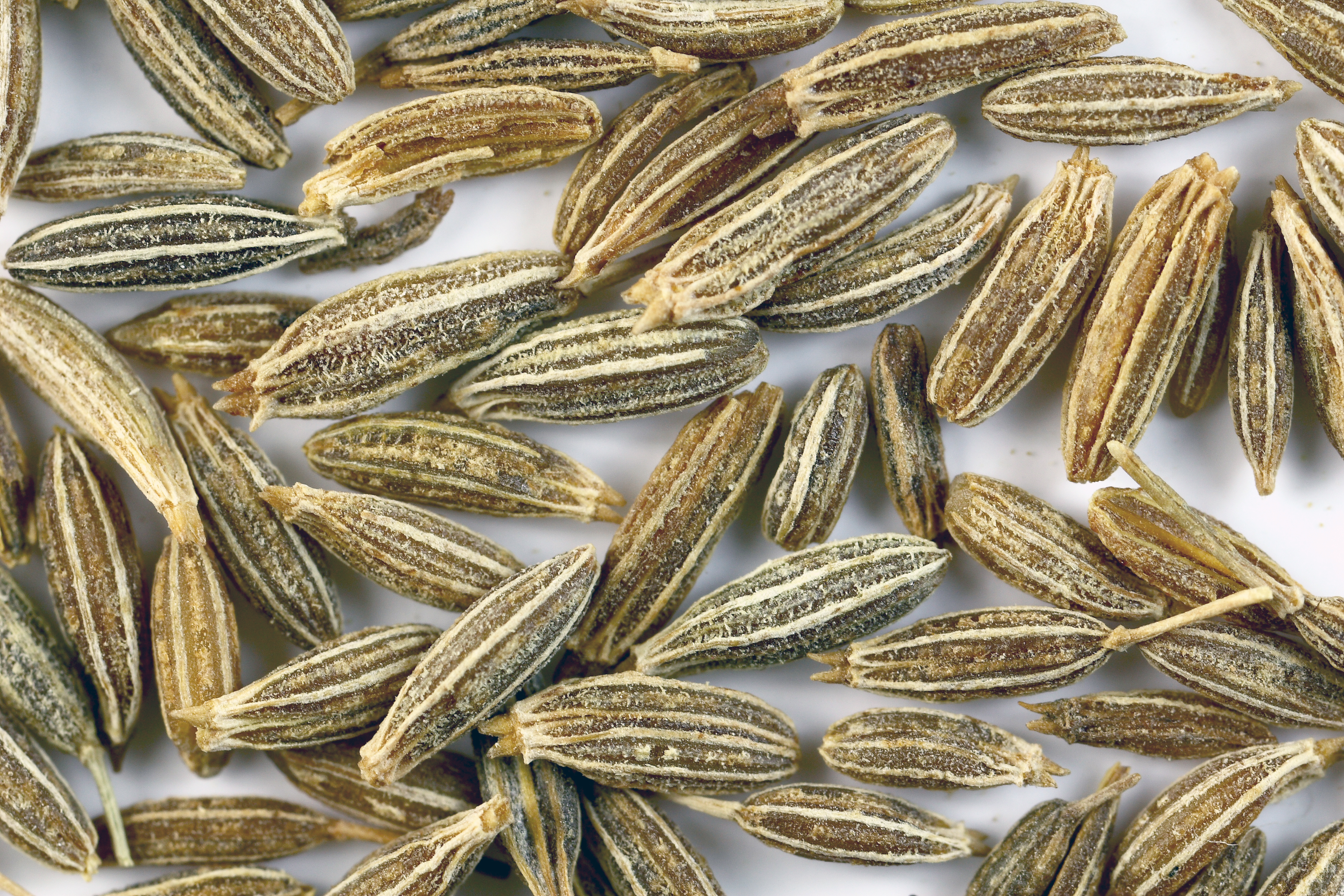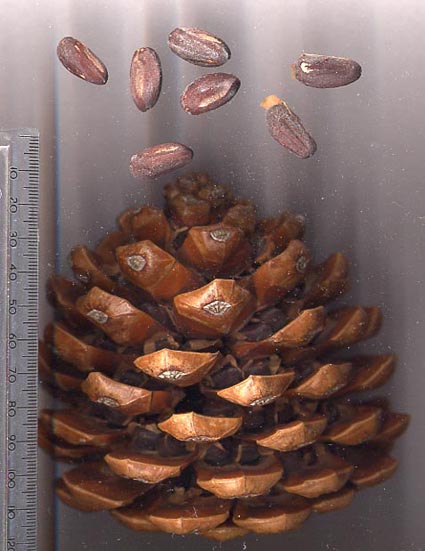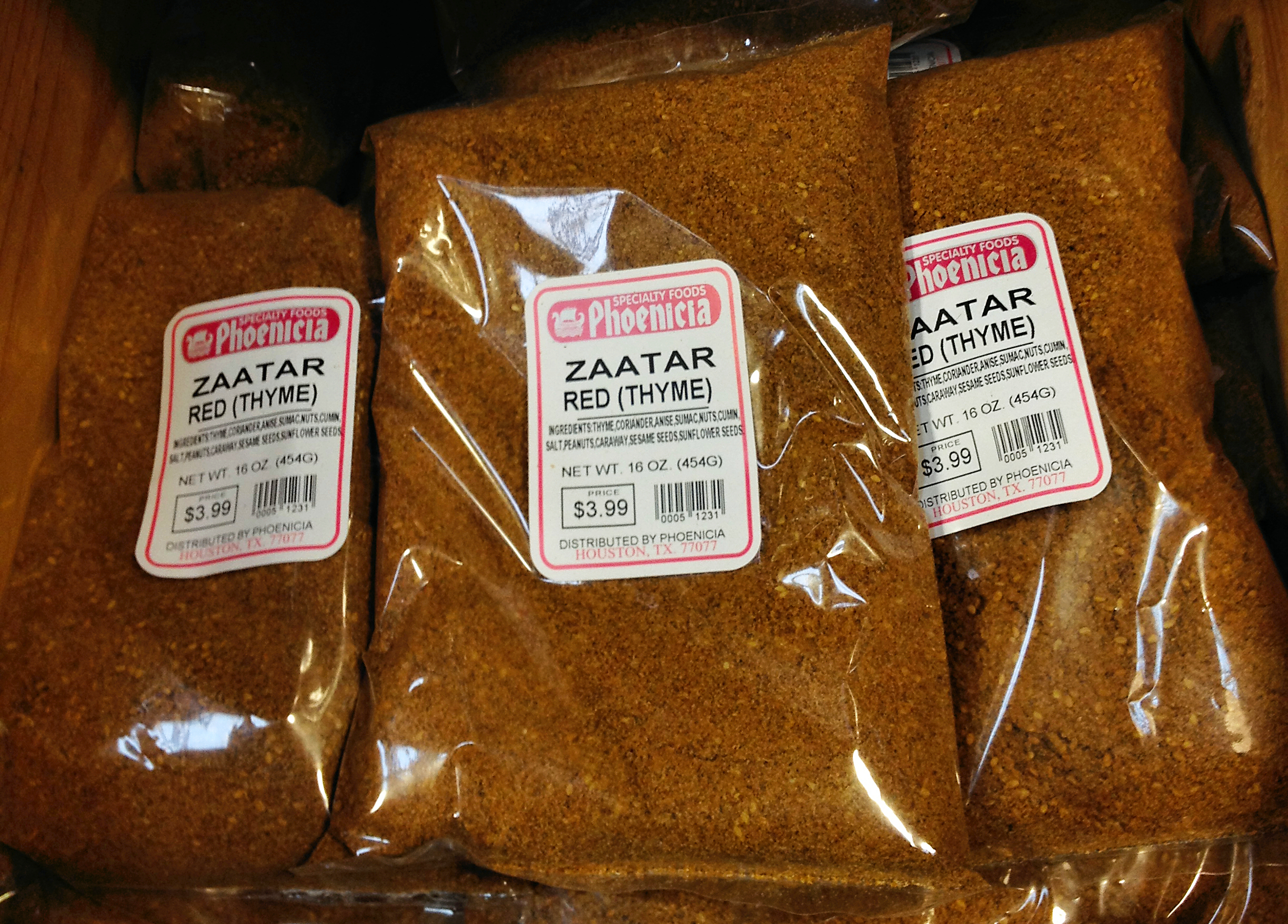|
Duqqa
Duqqa, dukka, Also spelled: ''dakka, dukkah, dukka'' du'ah, do'a, or dukkah (, , ) is an Egyptian and Middle Eastern condiment consisting of a mixture of herbs, nuts (usually hazelnut), and spices. It is typically used as a dip with bread or fresh vegetables for an hors d'œuvre. Pre-made versions of duqqa can be bought in the spice markets of Cairo, where they are sold in paper cones, with the simplest version being crushed mint, salt, and pepper. The packaged variety that is found in markets is composed of parched wheat flour mixed with cumin and caraway. In the Hejaz region, it has been part of the regional cuisine for decades. Etymology The word is derived from the Arabic for "to pound" since the mixture of spices and nuts is pounded together after being dry roasted to a texture that is neither powdered nor paste-like. Ingredients The actual composition of the spice mix can vary from family to family, vendor to vendor though there are common ingredients, such as sesame, co ... [...More Info...] [...Related Items...] OR: [Wikipedia] [Google] [Baidu] |
Egyptian Cuisine
Egyptian cuisine makes heavy use of poultry, legumes, vegetables and fruit from Egypt's rich Nile Valley and Delta. Examples of Egyptian dishes include rice-stuffed vegetables and grape leaves, hummus, falafel, shawarma, kebab and kofta. Others include '' ful medames'', mashed fava beans; '' koshary'', lentils and pasta; and '' molokhiyya'', jute leaf stew. A local type of pita known as ( Egyptian Arabic: ) is a staple of Egyptian cuisine, and cheesemaking in Egypt dates back to the First Dynasty of Egypt, with Domiati being the most popular type of cheese consumed today. Egyptian cuisine relies heavily on vegetables and legumes, but can also feature meats, most commonly rabbit and poultry such as squab, chicken, duck, quail and goose. Lamb and beef are commonly used in Egyptian cuisine, particularly for grilling and in a variety of stews and traditional dishes. Goat and camel are also eaten but are not as readily available nationwide. Offal is also a popular ... [...More Info...] [...Related Items...] OR: [Wikipedia] [Google] [Baidu] |
Egypt
Egypt ( , ), officially the Arab Republic of Egypt, is a country spanning the Northeast Africa, northeast corner of Africa and Western Asia, southwest corner of Asia via the Sinai Peninsula. It is bordered by the Mediterranean Sea to northern coast of Egypt, the north, the Gaza Strip of Palestine and Israel to Egypt–Israel barrier, the northeast, the Red Sea to the east, Sudan to Egypt–Sudan border, the south, and Libya to Egypt–Libya border, the west; the Gulf of Aqaba in the northeast separates Egypt from Jordan and Saudi Arabia. Cairo is the capital, list of cities and towns in Egypt, largest city, and leading cultural center, while Alexandria is the second-largest city and an important hub of industry and tourism. With over 109 million inhabitants, Egypt is the List of African countries by population, third-most populous country in Africa and List of countries and dependencies by population, 15th-most populated in the world. Egypt has one of the longest histories o ... [...More Info...] [...Related Items...] OR: [Wikipedia] [Google] [Baidu] |
Cumin
Cumin (, ; ; ''Cuminum cyminum'') is a flowering plant in the family Apiaceae, native to the Irano-Turanian Region. Its seeds – each one contained within a fruit, which is dried – are used in the cuisines of many cultures in both whole and ground form. Although cumin is used in traditional medicine, there is no high-quality evidence that it is safe or effective as a therapeutic agent. Etymology and pronunciation The term comes via Middle English ''comyn'', from Old English ''cymen'' (which is cognate with Old High German ''kumin'') and Old French cummin, both from the Latin term . This in turn comes from the Ancient Greek (), a Semitic languages, Semitic borrowing related to Hebrew language, Hebrew () and Arabic (). All of these ultimately derive from Akkadian language, Akkadian (). The English word is traditionally pronounced (), like "coming" with an ⟨n⟩ instead of ⟨ng⟩ (/ŋ/)."Cumin." '' A Way with Words'' (Radio broadcast/podcast). 25 October 2014. Re ... [...More Info...] [...Related Items...] OR: [Wikipedia] [Google] [Baidu] |
Pine Nut
Pine nuts, also called piñón (), pinoli (), or pignoli, are the edible seeds of pines (family Pinaceae, genus ''Pinus''). According to the Food and Agriculture Organization, only 29 species provide edible nuts, while 20 are traded locally or internationally owing to their seed size being large enough to be worth harvesting; in other pines, the seeds are also edible but are too small to be of notable value as human food. The biggest producers of pine nuts are China, Russia, North Korea, Pakistan and Afghanistan. As pines are gymnosperms, not angiosperms (flowering plants), pine nuts are not " true nuts"; they are not botanical fruits, the seed not being enclosed in an ovary which develops into the fruit, but simply bare seeds—"gymnosperm" meaning literally "naked seed" (from and ). The similarity of pine nuts to some angiosperm fruits is an example of convergent evolution. Species and geographic spread In Asia, two species, in particular, are widely harvested: Korea ... [...More Info...] [...Related Items...] OR: [Wikipedia] [Google] [Baidu] |
Cheese
Cheese is a type of dairy product produced in a range of flavors, textures, and forms by coagulation of the milk protein casein. It comprises proteins and fat from milk (usually the milk of cows, buffalo, goats or sheep). During production, milk is usually acidified and either the enzymes of rennet or bacterial enzymes with similar activity are added to cause the casein to coagulate. The solid curds are then separated from the liquid whey and pressed into finished cheese. Some cheeses have aromatic molds on the rind, the outer layer, or throughout. Over a thousand types of cheese exist, produced in various countries. Their styles, textures and flavors depend on the origin of the milk (including the animal's diet), whether they have been pasteurised, the butterfat content, the bacteria and mold, the processing, and how long they have been aged. Herbs, spices, or wood smoke may be used as flavoring agents. Other added ingredients may include black pepper, ... [...More Info...] [...Related Items...] OR: [Wikipedia] [Google] [Baidu] |
Millet
Millets () are a highly varied group of small-seeded grasses, widely grown around the world as cereal crops or grains for fodder and human food. Most millets belong to the tribe Paniceae. Millets are important crops in the Semi-arid climate, semiarid tropics of Asia and Africa, especially in India, Mali, Nigeria, and Niger, with 97% of production in Developing country, developing countries. The crop is favoured for its Agricultural productivity, productivity and short growing season under hot dry conditions. The millets are sometimes understood to include the widely cultivated sorghum; apart from that, pearl millet is the most commonly cultivated of the millets. Finger millet, proso millet, and foxtail millet are other important crop species. Millets may have been consumed by humans for about 7,000 years and potentially had "a pivotal role in the rise of multi-crop agriculture and settled farming societies". Etymology The word ''millet'' is derived via Old French ''millet, ... [...More Info...] [...Related Items...] OR: [Wikipedia] [Google] [Baidu] |
Nigella Sativa
''Nigella sativa'' (common names, black caraway, black cumin, nigella or kalonji) is an annual flowering plant in the family Ranunculaceae, native to western Asia (Arabia, the Levant, Cyprus, Turkey, Iran and Iraq), and eastern Europe (Bulgaria and Romania). It is naturalized over parts of Europe, northern Africa, and east to Myanmar. It is used as a spice in various food preparations, especially in Arab and Halal cuisines. Etymology The genus name ''Nigella'' is a diminutive of the Latin "black", referring to the seed color. The specific epithet ''sativa'' means "cultivated". Common names In food preparation, ''Nigella sativa'' and its seeds are variously called black caraway, black seed, black cumin, fennel flower, nigella, nutmeg flower, Roman coriander, or black onion seed. Black seed and black caraway may also refer to '' Elwendia persica'', which is also known as ''Bunium persicum''. Description ''N. sativa'' grows to tall, with finely divided, linear (but not thread ... [...More Info...] [...Related Items...] OR: [Wikipedia] [Google] [Baidu] |
Chickpea
The chickpea or chick pea (''Cicer arietinum'') is an annual plant, annual legume of the family (biology), family Fabaceae, subfamily Faboideae, cultivated for its edible seeds. Its different types are variously known as gram," Bengal gram, garbanzo, garbanzo bean, or Egyptian pea. It is one of the earliest cultivated legumes, the oldest archaeological evidence of which was found in Syria. Chickpeas are high in protein (nutrient), protein. The chickpea is a key ingredient in Mediterranean cuisine, Mediterranean and Middle Eastern cuisines, used in hummus, and, when soaked and coarsely ground with herbs and spices, then made into patties and fried, falafel. As an important part of Indian cuisine, it is used in salads, soups, stews, and curries. In 2023, India accounted for 75% of global chickpea production. Etymology Chickpeas have been cultivated for at least ten thousand years. Cultivation spread from the Fertile Crescent eastward toward South Asia and into Europe through th ... [...More Info...] [...Related Items...] OR: [Wikipedia] [Google] [Baidu] |
Zaatar
Za'atar ( ; , ) is a versatile herb blend and family of wild herbs native to the Levant, central to Middle Eastern cuisine and culture. The term refers both to aromatic plants of the ''Origanum'' and '' Thymbra'' genera (including '' Origanum syriacum'', known as Bible hyssop) and to the prepared spice mixture of dried herbs, toasted sesame seeds, sumac, and salt. With roots stretching back to ancient Egypt and classical antiquity, za'atar has been used for millennia as a seasoning, folk remedy, and cultural symbol. The spice blend varies regionally, with Lebanese versions emphasizing sumac's tartness, while Palestinian varieties may include caraway. It flavors iconic dishes like '' manakish'' (za'atar flatbread), enhances labneh and hummus, and is mixed with olive oil as a dip (''za'atar-wu-zayt''). Beyond cuisine, medieval Arabic and Jewish medical texts, including works by Maimonides, documented za'atar's digestive benefits, and Palestinian tradition associates it with men ... [...More Info...] [...Related Items...] OR: [Wikipedia] [Google] [Baidu] |
Marjoram
Marjoram (, ''Origanum majorana'') is a cold-sensitive perennial plant, perennial herb or undershrub with sweet pine and citrus flavours. In some Middle Eastern countries, marjoram is synonymous with oregano, and there the names sweet marjoram and knotted marjoram are used to distinguish it from other plants of the genus ''Origanum''. It is also called pot marjoram, although this name is also used for other cultivated species of ''Origanum''. History Marjoram is indigenous to Cyprus, the Mediterranean, Turkey, Western Asia, the Arabian Peninsula, and the Levant, and was known to the ancient Ancient Greece, Greeks and Ancient Rome, Romans as a symbol of happiness. It may have spread to the British Isles during the Middle Ages. Marjoram was not widely used in the United States until after World War II. The name marjoram (Old French: ''majorane''; ) does not directly derive from the Latin word (major). Marjoram is related to Samhain, the Ancient Celtic religion, Celtic pagan ho ... [...More Info...] [...Related Items...] OR: [Wikipedia] [Google] [Baidu] |
Black Pepper
Black pepper (''Piper nigrum'') is a flowering vine in the family Piperaceae, cultivated for its fruit (the peppercorn), which is usually dried and used as a spice and seasoning. The fruit is a drupe (stonefruit) which is about in diameter (fresh and fully mature), dark red, and contains a stone which encloses a single pepper seed. Peppercorns and the ground pepper derived from them may be described simply as ''pepper'', or more precisely as ''black pepper'' (cooked and dried unripe fruit), ''green pepper'' (dried unripe fruit), or ''white pepper'' (ripe fruit seeds). Black pepper is native to the Malabar Coast of India, and the Malabar pepper is extensively cultivated there and in other tropical regions. Ground, dried, and cooked peppercorns have been used since antiquity, both for flavour and as a traditional medicine. Black pepper is the world's most traded spice, and is one of the most common spices added to cuisines around the world. Its spiciness is due to the che ... [...More Info...] [...Related Items...] OR: [Wikipedia] [Google] [Baidu] |
Coriander
Coriander (), whose leaves are known as cilantro () in the U.S. and parts of Canada, and dhania in parts of South Asia and Africa, is an annual plant, annual herb (''Coriandrum sativum'') in the family Apiaceae. Most people perceive the leaves as having a fresh, slightly citrus taste. Due to variations in the gene OR6A2, some people perceive it to have a soap-like taste, or even a pungent or rotten taste. It is native to the Mediterranean Basin. All parts of the plant are edible, but the fresh leaves and the dried seeds are the parts most traditionally used in cooking. It is used in certain cuisines, like Mexican cuisine, Mexican, Indian cuisine, Indian and Southeast Asian cuisine, Southeast Asian. Description It is a soft plant growing to tall. The leaves are variable in shape, broadly lobed at the base of the plant, and slender and feathery higher on the flowering stems. The flowers are borne in small umbels, white or very pale pink, asymmetrical, with the petals ... [...More Info...] [...Related Items...] OR: [Wikipedia] [Google] [Baidu] |







